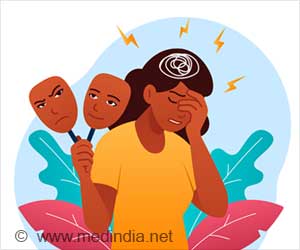A recent study discovered that each lonely individual has their own distinctive way of perceiving the world.

Lonely Individuals Process the World in Idiosyncratic Ways
Go to source).
‘Lonely individuals not only deviate from the societal norm in processing the world, but each lonely person also exhibits their own unique differences. #Loneliness #MentalHealth
’





Copious research shows that loneliness is detrimental to well-being and is often accompanied by self-reported feelings of not being understood by others. A recent report from the United States Surgeon General’s office referred to loneliness as a public health crisis in reaction to the growing number of adults suffering from this condition. Even before the onset of the COVID-19 pandemic, approximately half of U.S. adults reported experiencing measurable levels of loneliness.Loneliness is Unique and Personal to Individuals
While she was a postdoctoral fellow at UCLA, Elisa Baek, assistant professor of psychology at USC Dornsife, sought to better understand what contributes to such feelings of disconnection and being misunderstood. Baek and her team used a neuroimaging technique called functional magnetic resonance imaging (fMRI) to examine the brains of 66 first-year college students while they watched a series of video clips. The videos ranged in topic from sentimental music videos to party scenes and sporting events, providing a diverse array of scenarios for analysis.Before being scanned, the participants, who ranged in age from 18 to 21, were asked to complete the UCLA Loneliness Scale, a survey that measures a person’s subjective feelings of loneliness and feelings of social isolation.
Based on the survey results, the researchers separated the participants into two groups: lonely and “nonlonely” (those not experiencing loneliness). They then scanned each participant’s brain using fMRI as the participant watched the videos.
Comparing the brain imaging data between the two groups, the researchers discovered that lonelier individuals exhibited more dissimilar and idiosyncratic brain processing patterns than their non-lonely counterparts.
This finding is significant because it reveals that neural similarity, which refers to how similar the brain activity patterns of different individuals are, is linked to a shared understanding of the world. This shared understanding is important for establishing social connections. People who suffer from loneliness are not only less similar to society’s norm of processing the world, but each lonely person differs in unique ways, as well. That uniqueness may further impact the feelings of isolation and lacking social connections.
Advertisement
Loneliness isn’t About Having or not Having Friends
So, does idiosyncratic processing in lonely individuals cause loneliness, or is it a result of loneliness? The researchers observed that individuals with high levels of loneliness — regardless of how many friends or social connections they had — were more likely to have idiosyncratic brain responses. This raised the possibility that being surrounded by people who see the world differently from oneself may be a risk factor for loneliness, even if one socializes regularly with them.The study also suggests that because social connections or disconnections fluctuate over time, it may influence the extent to which an individual processes the world idiosyncratically.
Reference:
- Lonely Individuals Process the World in Idiosyncratic Ways - (https://journals.sagepub.com/doi/10.1177/09567976221145316)
Source-Eurekalert











